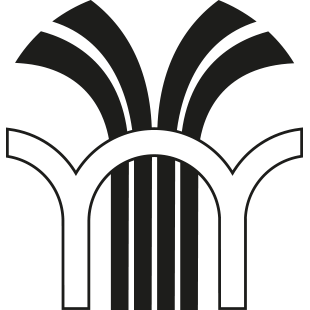Sprudelhof (fountain courtyard)
In Europe's largest self-contained Art Nouveau ensemble, the reference to water as a health-giving force is ever-present. The former spa complex is a synthesis of the arts and impressively shows the combination of architecture, free and applied art as well as garden and square design.
Visitors to the Sprudelhof are fascinated as soon as they enter. A view of Bad Nauheim's iconic landmark opens up from the top stairs of the large flight of steps between two gatehouses. Bright white walls with ornaments carved from shell limestone beckon you to wander through the turn-of-the-century bathing complex. Large clock towers rise above the buildings. And at the centre is a monumental basin with bubbling fountains, surrounded by arcades of a pure design.
The Sprudelhof gives visitors an immediate impression of Bad Nauheim's history as a spa resort of world renown. The spa complex was built in Art Nouveau style between 1905 and 1911. It included six bathhouses with waiting rooms and a total of 265 bathing cubicles, two administration buildings, forming a courtyard-like complex open to the spa gardens and in the centre of which there are still two characteristic springs. What makes Bad Nauheim's Art Nouveau so special is that everything is still preserved in its original state - waiting rooms, inner courtyards and the tubs in bathhouse 3 transport visitors back in time to the 1900s.
Even when visiting the interior spaces, Bad Nauheim's special Art Nouveau style can be found again, in which the reference to water as a health-giving force is always apparent. The bathhouses and ornamental courtyards reveal one gem after another: ceramic masks, fountains of honey-coloured terracotta, carbon dioxide bubbles, mermaids, wave ornaments and seahorses.
Prominent representatives of the Darmstadt Mathildenhöhe artists' colony, committed to Art Nouveau, took on the new construction of the Bad Nauheim baths at the beginning of the 20th century. Architect Wilhelm Jost gave the Sprudelhof its form. Many renowned artists contributed to the creative design, including Jakob Julius Scharvogel, Wilhelm Kleukens, Albin Müller and Heinrich Jobst. In the process, they created a total work of art that today represents Europe's largest self-contained Art Nouveau ensemble.
Facts & Figures
0 gold marks
The cost of building the baths – roughly 54 million euros in today's money.
0 bathing cubicles
Six bathing houses house this number of cubicles.
0 metres
The height of the large spring when it rises unthrottled from the ground.
The Bathhouses

The windows' black solder painting with their symmetrically arranged pairs of birds magically attracts the visitor. Honey-coloured terracotta reliefs embedded in blue-glazed ceramic bricks exude the charm of a fairy-tale world. Mythological figures cavort on the longitudinal frieze zones in the ornamental courtyard. A crowned mermaid on the fountain column rides coquettishly on a dolphin.

Blue and red-brown mosaic patterns conjure up a solemn and ceremonial mood in the waiting room. The ornamental courtyard's rectangular water basin is reminiscent of a Roman atrium house. Rose-covered columns and pergolas lend the courtyard classicist features. A small fountain made of shell limestone rises out of the water basin, on which a roundish cherub offers grapes to the visitor.

The waiting room walls of both bathhouses are clad in purple-brown Lahn marble, which in bathhouse 5 is adorned with a surrounding gold mosaic. Strong accents are set by coloured oval windows made of opalescent glass. The abstract ornaments suggest a frog and a dragonfly. In the ornamental courtyards, memories of Baroque grottos and water creatures of the Art Nouveau period are united in the fountains' ornamentation.

The “Ceramic Ornamental Courtyard” with its surrounding arcade is reminiscent of monastic cloisters. Aquatic animals cavort on pedestals, capitals, plant pots and benches. The fountain complex, with its erotic aura and Mediterranean lightness, is reminiscent of the Renaissance period. Flower children dance a springtime circle dance, the nymphs' breasts spray water as an allegory of life-giving nature. The waiting room is lined with sharp-fired ceramics in shades of grey, brown, green and white.

Due to its exquisite décor, the Fürstenbad was reserved only for the high nobility. Among the prominent guests was Russian Tsarina Alexandra. Those in search of healing went to the marble bath at the feet of the goddess Aphrodite, the “Foamborn” or “Anadyomene”, “she who rises from the water”. The snakes hovering above her head are a reference to Asklepios, the god of healing.




